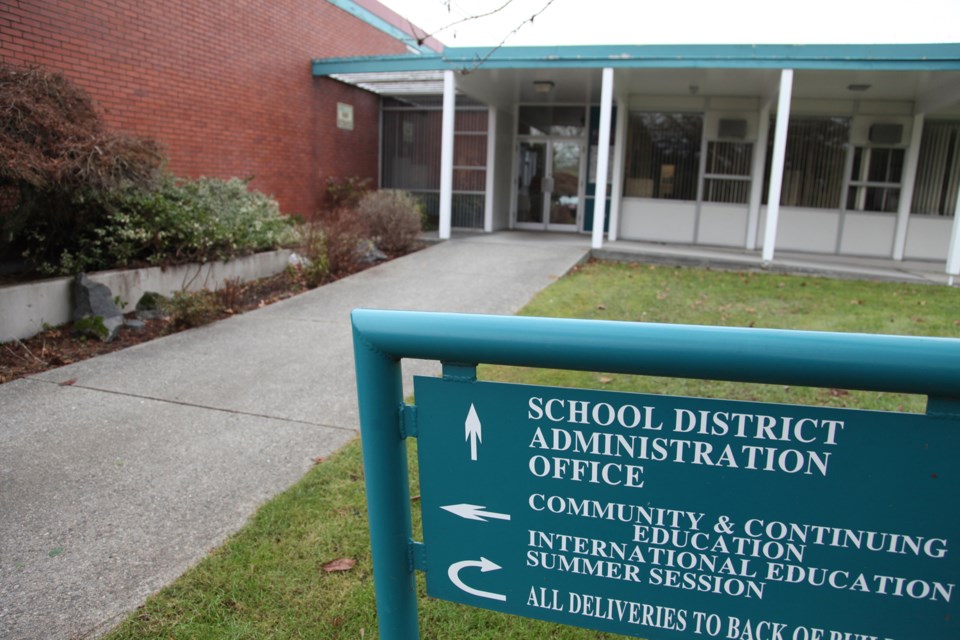The school district has come up with a safety plan for schools to deal with pipeline-related emergencies, the NOW has learned.
The plan outlines response recommendations for two pipeline scenarios: rupture of a line during excavation or an underground leak.
The plan asks schools to identify major pipelines by looking for the telltale yellow Kinder Morgan pipeline signs. If those are found within 100 metres of the buildings, there should be an alternative evacuation route and a safe destination away from the release site, the document explains.
According to the plan, signs of an underground pipeline rupture can include a hissing or roaring sound, liquid on the ground near the pipeline, dirt blown into the air, fire or a dense white cloud, and the strong scent of petroleum. In that case, teachers are supposed to evacuate the area immediately, administer first aid if needed and notify administration, which will then call the Trans Mountain emergency line.
In the case of a rupture during excavation, which happened in Burnaby’s Westridge neighbourhood in 2007, teachers follow the same protocol, and administrators will call 911, as well as Trans Mountain, the pipeline operator.
For ruptures, teachers should assess the situation based the proximity of the leak, and then keep the students inside and close the doors and windows if there is airborne oil or white fog.
The plan also outlines steps for evacuating the building and administering first aid.
The Burnaby Teachers’ Association reviewed the plan and sent some suggestions to the district. Association president James Sanyshyn has more questions about specifics for each school.
“The plan looks pretty good as a first draft. I would say what they need to make sure is to create school-specific plans,” Sanyshyn said. “We haven’t seen those. We just got the generic template from the district.”
The teachers’ association also suggested schools hold drills for an environmental disaster, like they would for an earthquake or fire. First aid attendants at each affected school should be familiar with protocol on dealing with jet fuel and bitumen, Sanyshyn added.
Baljinder Narang, chair of the school board, said schools are ensuring that all staff are aware there is a separate plan for pipeline emergencies.
“Please know that the board takes safety issues very seriously,” she said.
According to Narang, different schools are supposed to add to the plans.
“I think each school is going to be responsible for producing their own. Obviously they will be overseen by management and the superintendent,” she said, adding that first aid
attendants have reviewed procedures to deal with petroleum based products.
Kinder Morgan’s existing pipeline runs along the property of two local schools – Stoney Creek and Forest Grove elementaries – and there could be more, depending on where the company will run the second line if the National Energy Board approves the expansion.
The Burnaby Teachers’ Association is opposed to the pipeline expansion and has applied as an intervenor in Kinder Morgan’s National Energy Board hearing.
In January, the association said the proposed new pipeline route would run close to seven elementary schools (Seaforth, Cameron, Westridge, Lochdale, Forest Grove, Stoney Creek and Montecito) and Burnaby Mountain Secondary.
As previously reported in the NOW, Burnaby Residents Opposing Kinder Morgan Expansion called on the education minister to come up with a safety plan for schools close to pipelines in January 2013.



